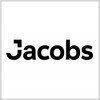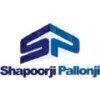Filter interviews by
McDermott International Piping Design Engineer Interview Questions and Answers
McDermott International Piping Design Engineer Interview Experiences
1 interview found
(3 Questions)
- Q1. Explain the suction piping of pump?
- Ans.
Suction piping of a pump is the piping system that brings fluid into the pump from the source.
Suction piping is designed to ensure a smooth flow of fluid into the pump without any air pockets or cavitation.
The piping should be sized appropriately to prevent excessive pressure drop and maintain efficient pump operation.
Proper alignment and support of the piping is crucial to prevent stress on the pump and ensure longevi...
- Q2. Why we used eccentric reducer in suction line with flat side up/
- Ans.
Eccentric reducers are used in suction lines with flat side up to prevent air pockets and improve flow efficiency.
Eccentric reducers help in preventing air pockets from forming in the suction line
Having the flat side up ensures that any trapped air can easily escape
Improves flow efficiency by reducing turbulence and pressure drop
Commonly used in applications where smooth flow is critical, such as pump suction lines
- Q3. What is figure 8?
- Ans.
Figure 8 is a type of knot commonly used in piping design to secure two ropes or cables together.
Figure 8 knot is also known as a stopper knot due to its ability to prevent ropes from slipping through holes or other openings.
It is easy to tie and untie, making it a popular choice for various applications in piping design.
The figure 8 knot is often used in rock climbing, sailing, and rescue operations for its reliabilit...
(2 Questions)
- Q1. Piping of control station
- Ans.
Control station piping is essential for regulating and monitoring the flow of fluids in a system.
Control station piping connects various components such as valves, instruments, and equipment to control the flow of fluids.
Proper design of control station piping ensures efficient operation and safety of the system.
Consider factors like pressure, temperature, and material compatibility when designing control station pipin...
- Q2. Suction piping of pump
- Ans.
Suction piping of pump is crucial for efficient operation and performance.
Suction piping should be designed to minimize friction losses and ensure proper flow to the pump.
Proper sizing and layout of suction piping is essential to prevent cavitation and maintain pump efficiency.
Consider factors such as pipe diameter, length, bends, and fittings when designing suction piping.
Use smooth bore pipes, avoid sharp bends, and ...
Top trending discussions






Interview questions from similar companies

I applied via Referral and was interviewed before Jul 2020. There were 3 interview rounds.
Interview Questionnaire
1 Question
- Q1. Purely Technical
Interview Preparation Tips

Interview Questionnaire
1 Question
- Q1. Related to highway design
Interview Preparation Tips

Design Engineer Interview Questions & Answers
Jacobs Engineering Groupposted on 17 Sep 2021
I applied via Referral and was interviewed in Aug 2021. There was 1 interview round.
Interview Questionnaire
1 Question
- Q1. Tell me about you work experience.
- Ans. I have explained them about my projects I have worked with key points and highlight.
Interview Preparation Tips
They have also asked which softwares and codes I have worked on. Their main requirement was US codes.

Design Engineer Interview Questions & Answers
Jacobs Engineering Groupposted on 21 Nov 2022

Good test. You need to do a good preparation to crack that.
(2 Questions)
- Q1. Technical round was a deatiled round. power system was the core.
- Q2. Basic or Power System
Interview Preparation Tips

I applied via Approached by Company and was interviewed before Dec 2023. There were 2 interview rounds.
(2 Questions)
- Q1. Process description of treatment plant
- Ans.
A treatment plant is a facility where wastewater is treated to remove contaminants before being discharged back into the environment.
Treatment plants use a combination of physical, chemical, and biological processes to remove pollutants from wastewater.
Common processes in treatment plants include screening, sedimentation, filtration, and disinfection.
Examples of treatment plants include sewage treatment plants, water t...
- Q2. About different concepts of pid
(2 Questions)
- Q1. Salary discussion and negotiation
- Q2. French language proficiency

(1 Question)
- Q1. Technical questions
(1 Question)
- Q1. Salary discussion

I appeared for an interview in Oct 2022.

(1 Question)
- Q1. Duration of noticed period
(1 Question)
- Q1. Software and std. .. Knowledge ofvoil and gas
Interview Preparation Tips

I applied via LinkedIn and was interviewed in Aug 2023. There were 3 interview rounds.

(1 Question)
- Q1. Cable sizing calculation
(1 Question)
- Q1. Technical related to engineering
Interview Preparation Tips

I applied via Campus Placement and was interviewed in Aug 2024. There was 1 interview round.
Question where asked from trains,permutation and some grammer
Interview Preparation Tips
- Transformers
- basic aptitude
McDermott International Interview FAQs
Tell us how to improve this page.
McDermott International Interviews By Designations
- McDermott International Electrical Engineer Interview Questions
- McDermott International Structural Engineer Interview Questions
- McDermott International Procurement Specialist Interview Questions
- McDermott International Accountant Interview Questions
- McDermott International Associate Engineer Interview Questions
- McDermott International QA QC Supervisor Interview Questions
- McDermott International Design Engineer Interview Questions
- McDermott International Construction Specialist Interview Questions
- Show more
Interview Questions for Popular Designations
- Design Engineer Interview Questions
- Civil Site Engineer Interview Questions
- Process Engineer Interview Questions
- Senior Design Engineer Interview Questions
- Electrical Design Engineer Interview Questions
- Piping Engineer Interview Questions
- Junior Design Engineer Interview Questions
- Piping Designer Interview Questions
- Show more
Overall Interview Experience Rating
based on 1 interview experience
Difficulty level
Duration
Interview Questions from Similar Companies
McDermott International Piping Design Engineer Reviews and Ratings
based on 2 reviews
Rating in categories
|
Piping Engineer
158
salaries
| ₹11.4 L/yr - ₹20 L/yr |
|
Piping Designer
92
salaries
| ₹6.9 L/yr - ₹15 L/yr |
|
Electrical Designer
88
salaries
| ₹7.5 L/yr - ₹16.1 L/yr |
|
Process Engineer
83
salaries
| ₹10.4 L/yr - ₹19.7 L/yr |
|
Structural Designer
77
salaries
| ₹9.4 L/yr - ₹17.5 L/yr |

L&T Construction

Shapoorji Pallonji Group

Saint-Gobain

AECOM
- Home >
- Interviews >
- McDermott International Interview Questions











